#rems software
Explore tagged Tumblr posts
Text
Cloud-Based REMS for Efficient Lease Management
In today’s fast-paced real estate industry, managing leases efficiently is critical to ensuring streamlined operations, enhanced tenant satisfaction, and maximized profitability. Enter cloud-based Real Estate Management Systems (REMS), a game-changer for property managers and real estate companies navigating the complexities of lease management.
What is a Cloud-based REMS?
A cloud-based Real Estate Management System is a digital platform hosted on the cloud, offering real-time access to lease management tools, tenant data, and property performance metrics. Unlike traditional on-premises software, cloud-based solutions provide flexibility, scalability, and seamless collaboration for property managers, owners, and tenants alike.
Benefits of Cloud-based REMS for Lease Management
Real-time Accessibility: With cloud-based REMS, you can access lease data from anywhere, at any time, using any device with an internet connection. This level of accessibility is invaluable for property managers handling multiple properties or teams working remotely.
Automated Processes: Automating lease management tasks like rent reminders, renewals, and compliance tracking reduces manual effort, minimizes errors, and saves time.
Centralized Data Management: All lease agreements, tenant records, and payment histories are stored in a single, secure repository, making it easy to retrieve information quickly and ensure consistency.
Cost-effectiveness: Cloud-based solutions eliminate the need for expensive hardware installations and ongoing maintenance costs, making them a budget-friendly option for businesses of all sizes.
Enhanced Security: Modern cloud-based REMS platforms employ advanced encryption and security measures, ensuring that sensitive tenant and property data remains protected.
The Need for Customizable Property Management Software for Large Portfolios
Managing a large real estate portfolio comes with unique challenges. Standardized solutions often fall short in addressing the diverse needs of extensive property portfolios, such as varying lease structures, compliance requirements, and reporting metrics. Customizable property management software allows businesses to tailor their systems to their specific operational workflows, ensuring efficiency and accuracy.
Why Cloud-based REMS is the Future of Lease Management
The real estate sector is rapidly embracing digital transformation, and cloud-based REMS stands at the forefront of this evolution. These systems not only simplify lease management but also enable property managers to focus on strategic growth and tenant satisfaction. With their scalability and adaptability, cloud-based solutions are perfectly suited for both small businesses and large enterprises managing diverse property portfolios.
Conclusion
Investing in a cloud-based REMS is no longer a luxury but a necessity for real estate companies striving for efficiency and competitiveness. By adopting the right property management software, such as Centra REMS, businesses can streamline operations, enhance tenant relationships, and achieve long-term success. Whether you’re managing a small portfolio or a vast real estate empire, customizable property management software ensures that your unique needs are met, driving efficiency and growth.
0 notes
Text
R.E.M. Monster Interactive Kit (Windows 3.1, Tom Recchion, Cecil Juanarena & Greg Fiering, 1994)
A promotional floppy disk with the feel of a 90's multimedia CD-ROM. You can run in it your browser here. May run slowly in Firefox.
For more Migraine Boy adventures, see this borrowable comics collection, these underground comics, and these animated shorts from MTV.
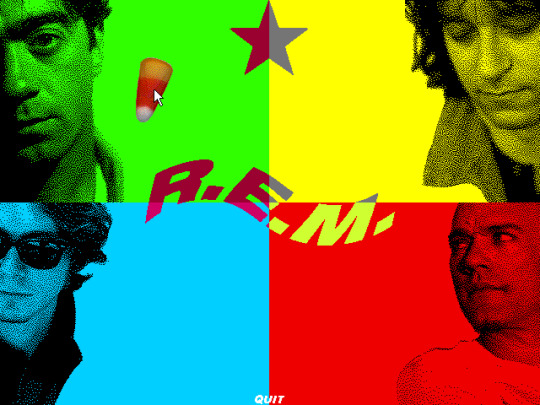

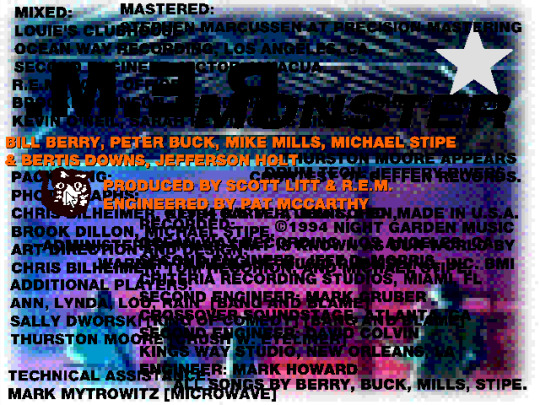
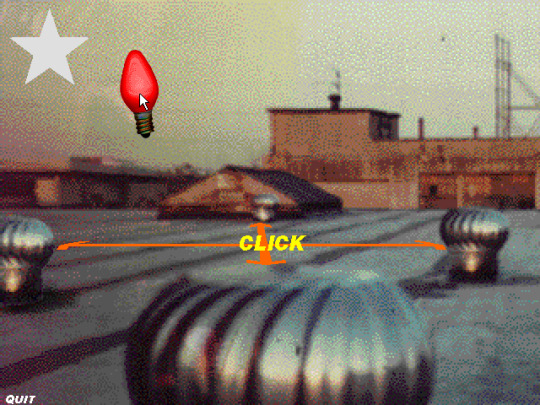
#internet archive#windows 3.1#old software#multimedia#computer history#computing history#rem#r.e.m.#bill berry#peter buck#mike mills#michael stipe#alt rock#alternative rock#migraine boy#1994#1990s#90s
15 notes
·
View notes
Text
Quick little timelapse of the lotus pond frame for the HuaLian animatic I'm working on. Sound on if you like chill songs that match the video pretty well :)
#hualian#xie lian#tian guan ci fu#tgcf#mxtx fanart#san lang#hua cheng#svsss#mdzs#animatic#wip#rem does art#the song is called Fishing for Magikarp by Demon Gummies#don't ask me why it's framed like this#clip studio paint's timelapse recording function gives me weird videos that look shitty at full size even though they're supposed to be HD#and I don't have video editing software to add music so I just screenrecord#so I have to screen record with the video player at a weird size or else it looks terrible
35 notes
·
View notes
Text

Guys how do you use magma LOL
#baby’s first magma#rem lezar is here because vinesauce has poisoned me#magma#magma doodles#i didn’t know it was an actual like art software i thought it was just for drawing fun times with friends#i like it though it’s fun on my lonesome#Loïk Archambeau#metalocalypse oc
7 notes
·
View notes
Text
#css#math#rem()#mod()#codeblr#studyblr#web#design#user#software#code#programming#language#css3#style
1 note
·
View note
Text
ok so the Letter App doesnt let you post links to videos so...sorry yall are just gonna have to take my word for it that i got a 96/69 X rank win with a fist bump.
#rem rambles#maybe when i learn to use editing software i'll post a montage or some shit#but until then just...imagine it in your mind.#or ask me for the link to my Letter App and i'll give it to you. its just clips from my switch. i dont post there.
1 note
·
View note
Text
James Sunderland Headcanons/Analysis! (SFW) Stuff about his job, dad, music, tidbits

These are based on Remake James! It's a little easier to come up with headcanons for remake James, since he's a bit more expressive here than the OG. Job:
James is an office clerk (this is confirmed canon), which means he has a job revolving around paying attention to detail. He keeps track of financial records, transactions, orders, supplies, and various other things that an office needs to run smoothly. He's messy, but he's good at his job and has a careful eye for detail. It makes sense for him since he's able to notice small things in Silent Hill that help him progress.
James is well-versed in using office software and spreadsheets, and sometimes is tasked with doing minor trouble-shooting for coworkers. James has an ongoing battle with a faulty office printer.
James prefers this kind of work, even if it doesn't exactly fill him with joy. He's definitely an introvert, but doesn't mind helping others if needed.
James does NOT participate in casual Friday. He always wears his button-down shirt and tie. Prefers not to get too casual about work; he likes to keep those spheres separate. Dad:
James sold his car to help with medical bills that weren't covered by his insurance. His father gave him his old 1977 Pontiac Ventura for free. It's the car his dad drove when he was growing up.
The car barely ran and James taught himself how to fix it. It was his only distraction from Mary's illness.
James has a strained relationship with his father, because he's just super weird. He's caught his dad saying and doing strange things, for instance, holding the box with Walter Sullivan's umbilical cord and just staring at it. One night, James came home from hanging out with his friends, and saw his dad in the kitchen, holding up a knife and staring at the wall as if in a trance. James was freaked out and decided to just come back home in the morning.
This might be dumb and random but I feel like Frank Sunderland doesn't have the best hygiene and his apartment smells. James is probably used to gross stuff. He doesn't like it, but he can deal with it.
James's mom left because she couldn't handle being around Frank anymore. James ended up growing up through his teen years with just his dad. Music:
James strikes me as the kind of guy who listens to The Police, Hall & Oates, maybe REM. Enjoys music with prominent bass lines. He probably listens mainly to hits from different bands as well.
Tends to prefer light rock. Metal isn't really his thing.
James's guilty pleasures are Duran Duran and Cocteau Twins.
I have his shuffle here!:
Tidbits:
James doesn't seem to laugh much, but he does have a sense of humor somewhere in there. Usually it's pretty dry and sarcastic. He appreciates observational humor.
Mary was fond of puns. He always pretended to hate them and roll his eyes, but would end up smiling or chuckling anyway.
James isn't much of a sweets guy, but his favorite ice cream flavor is vanilla. His favorite soda is Coke. He liked Coke floats as a kid. Favorite dessert is apple pie.
Drinks his coffee black.
Tried to tend to Mary's garden when she was sick, but he was overwhelmed by it and being unable to regrow the plants just made him feel worse. He didn't have her green thumb.
#silent hill 2#silent hill#sh2#james sunderland#sh2r#sh2 remake#silent hill 2 remake#james sunderland headcanons#james headcanon#mary sheperd-sunderland#mary sunderland#james and mary
206 notes
·
View notes
Text
AU Jervis Tetch
Me and @dariusblake have discussed how we'd write our own Batman / DC TV or comic series and each individual character that would appear in it. Tetch being among them. At his core, Tetch is someone deeply reluctant to stay in the real world and would first seek to create his own sanctuary (his Wonderland) like a Hikikomori before even considering developing a mind control device. Which would be later on, when he feels it's the only real way to feel in control of his life which - up to that point - slowly fell to pieces. He'd be one of the earliest antagonists sent to Arkham while it's still a respected institution genuinely there to help mentally ill and vulnerable people get back on their feet, before Arkham (under Strange's management) is effectively turned into a prison for super-criminals.
I'm also of the mind that Tetch would look very average, not a pretty boy or a decrepit leprechaun. Maybe on the shorter side and seeming shorter by the way he haunches both to make himself smaller and because he himself feels small with his cripplingly low self esteem after years of being put down and treated like he didn't belong. Creating Wonderland as a place where he does finally belong, though still feeling stuck behind the looking glass unable to reach through it for company. Isolated in his escapist safe haven.
Like in the animated series, Tetch would work in tech with a grant from the Wayne foundation, but not on a project to "enhance the brain's potential". Instead to make the neural / Brain-computer interface (BCI) of a more cost-effective mind-controlled prosthesis. Something which would go on to be used in Gotham's main hospital for patients with amputations and limb-paralysis. The focus being on stimulating motor function and sensory input. At home he'd try to translate that same BCI for simulating sensation and motion (like lucid dreaming, disconnecting is like awaking in the midst of REM sleep) in a virtual landscape (basically an especially immersive VR software akin to Sword Art Online's nerve gear) dubbed "WonderOS" and his pet project running on it called "Wonderland".
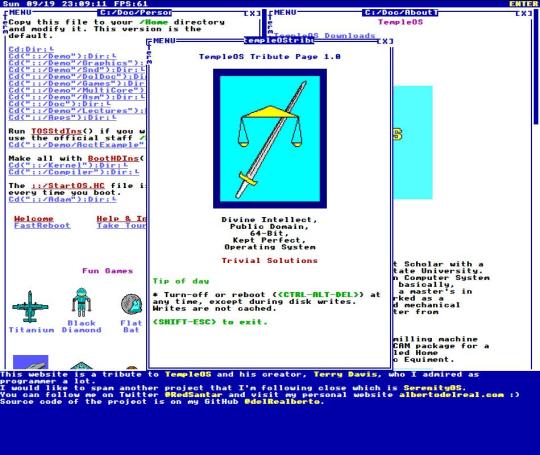
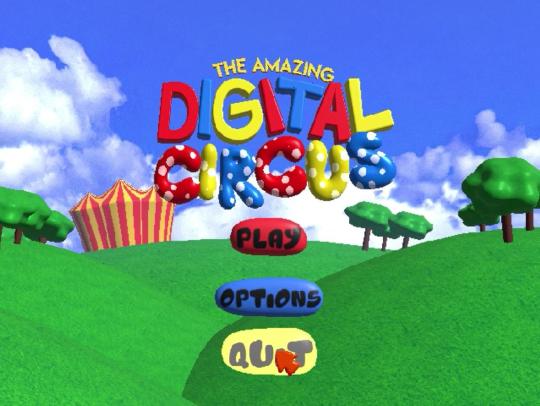
Less a direct recreation of Wonderland from Lewis Carol's novels and more his personal sandbox to tweak and enjoy in his own time. Although its only user, Tetch put meticulous detail into his avatar that no one would likely see. Standing tall and proud with a top hat and bow tie. His smile charming, rather than unnerving. He'd always manage to overdress no matter the occasion in real life, so it felt fitting to extend that habit here too. With so little going on in his life outside of his job, what started as a fun side-project soon encompassed all of his free time. Progressively losing his interoception the more he becomes engrossed in his pet-project. Easily losing track of time to the point of forgetting to sleep, eat or drink, or would fall asleep in the sandbox and be disorientated whenever he'd wake still wearing the headset.
Still, he'd always disconnect eventually. Each time hit like a worse hangover than the last. His shortening time spent in the real world only existing to fuel himself for a longer expedition into his expanding digital world. That is until he'd exhausted all its mechanics and NPC interactions. By now, adding more felt hollow. He'd know exactly what they'd say anyway so why bother? The comforting predictability of the oasis he'd constructed started showing its cracks, or rather it could no longer obscure what cracks had been there all this time. The loneliness... the isolation. When was the last time he spoke to a real person, even at work?
Frankly it was always hard to know what to talk about. He'd tried pitching Wonder OS at work before, garnering minimal interest at best. Like most of his ideas. It always seemed like any attempt to make conversation ended abruptly with no explanation. Who would want to spend time with him in the virtual world if people never wanted to do so in the real one? No, if he wanted to add more player characters he'd have to reach out a different way.
For all his difficulties making friends in the real world, Tetch accrued a fair few online. He'd originally used the forums to post tech support tips, gush about his favourite books, and provide updates about Wonder OS' development to mixed reception. Some genuine interest arose, so when the time came to test Wonderland's "multiplayer mode" there were already a handful of people eager to test it within an hour of the announcement's upload. He'd had about ten additional headsets he'd built for multiplayer mode ready to post and was willing to make more but for now he happily sent out the initial batch. Specially made to not include the admin privilege of being able to log off. He would get to dictate if or when they leave and, well, he cannot guarantee they'll be back so it's best not to give them the option.
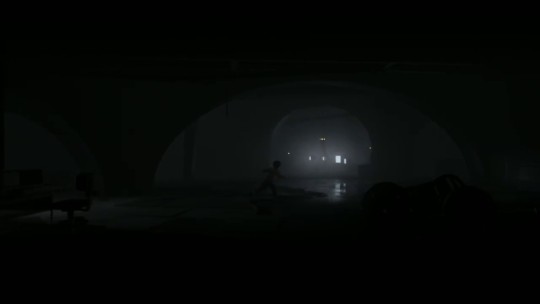

Tetch's performance at work may have been deteriorating before, but now his complete absence was noticed enough to garner a pink slip. One which never arrived. While Tetch's absence may have been more an annoyance to his colleagues that hadn't yet realised how much they leaned on him to get things done until now, the people he'd roped into being his captive audience were missed far sooner. Although they were found soon after their missing person cases were opened (being stuck at home), it only raised more questions. When someone tried yanking off one of their headsets, they were in a catatonic state - still partially in Wonderland.
The escalation from a missing persons case to some sort of hostage situation lead to the cases being grouped together and them entering Batman's radar. A common link was a. the headsets and b. the return address - which directly led back to Tetch. Most of the users hadn't recycled the packaging of their hardware before putting it on, making it easy to find. It's a good thing too, since no one (not even Tetch, who is the only one actually able to leave) has left Wonderland for a full week by the time Batman's on his trail. Too much longer and they'd keel over from neglecting to eat or drink.
Expecting a fight and some nefarious hostage scheme (as with the mob bosses he's faced thus far), Batman is shocked to find not a mastermind controlling a flurry of monitors, but someone rigged to their headset just like the other hostages. His apartment was in a shoddy state. Cables strewn about the floor haphazardly like mangrove roots in a swamp, the air stale and warm from days worth of heat emanating from the hardware that dominated the room he was found in. Curtains shut and dusty, untouched for what must have been months. Among the cables were tubes, an IV drip? Did Tetch plan ahead to make sure he could survive indefinitely rigged up to whatever he'd made?
After inspecting the computer the headset was connected to, Batman forcefully overrides Tetch's admin privileges and logs the hostages off. That alone seemed to stir something, like Tetch was in the midst of a night terror, which grew into a full-blown, panicked breakdown when Batman pulled his headset off. Shaking like a leaf, hands clasping his head as he sank from his chair to the floor. Honestly Batman doesn't really know what to do. Up until now he'd cracked down on Gotham's crime families who all put up a fierce fight, but this... is different. Still, it seems best to bring him in, if only to get him out of this dingy apartment and figure out where to go from there.
The GCPD aren't sure how to prosecute him. Would what he did be legally considered kidnapping? Or any other crime? He's kept in a holding cell while they fumble for a specific crime to charge him with. With nothing landing, he's instead sent to be a long-stay patient at Arkham (which at this point is a genuine respected psychiatric hospital for regular civilian patients) for both evaluation and therapy. They confiscated the hardware he'd used to run Wonder OS and sent it in for analysis, though couldn't make heads nor tails of a lot of his work.

Honestly being "sentenced" to free therapy really wasn't much of a punishment at all! Still took some time to adjust to the cold white brick walls, overly sanitised surroundings and the inescapable brightness both natural and not that did his head no favours. Haven't they heard of curtains? Until therapy he hadn't realised how infrequently he spoke out loud, stammering with nerves and the unfamiliarity of it. Like his mouth had forgotten what to do. Despite it all he was grateful for the company each session brought, even if it was for a prescribed purpose. Each chat feeling more sincere than any he'd had in years, to the point that his heart sank a little as each session came to a close. He hadn't really drank tea before coming here. Coffee, especially on days he'd forgotten to really sleep working all night on Wonder OS, was his go to, but a switch might be in order. Been a while since he last felt this calm. Calm enough that even his stammer was beginning to fade with the help of some speech therapy alongside his normal sessions.
The tea and kind words warming him to the idea that maybe the world isn't so scary and that he might even have a place in it. After a year or so of progress, the staff agreed to release him on probation. Pretty difficult to build a social support network while cooped up in an asylum, so they thought it best to give Tetch the opportunity to go out and meet new people. With no real support network to go back to, he'd really be starting from scratch like a tourist. Not the safest idea in Gotham, so they pointed him towards a few clubs and support groups first as a good starting point.
Of course, he went with the book club. Barely saying a word for the first few meetings, what confidence he was emboldened with upon release was slightly dampened by the reality of actually having to put himself out there. Truth be told, a few of the club's members recognised Tetch from his "Wonderland" incident a year ago and those that did make a concerted effort not to sit next to him, not that he was especially keen to initiate conversation either. That was until the week's topic turned to Alice in Wonderland, at the suggestion of one such clued-in member. As they'd suspected, Tetch perked right up, brimming with energy to discuss it!
The sudden shift in gears was pretty jarring, but one that people warmed up to. Though he'd still mainly talk about the story and occasionally let slip about aspects of his passion project (not realising it made more people clock where they'd heard of him from), it opened the door for more general conversation. His excited friendliness still on the jittery side, one of the members felt a little bad about how clearly anxious he was and offered to help him feel more welcome.
Giving advice on what helped him, including teaching Tetch how to microdose, which they preferred to take by brewing magic mushrooms into tea. And it helped! Becoming part of Tetch's morning routine, it's the closest he's felt to being himself back in Wonderland since well... you know. Tetch responded well to therapy, making remarkable progress even without medication, so his therapists though it best not to prescribe anything since it wasn't strictly necessary. The difference self-medicating made had Tetch second-guessing their judgement though.
After a few months of settling in, for once Tetch is invited to a social gathering outside of the book club to their annual Christmas do. In his youth as an apprentice lab tech at Wayne Enterprises he hadn't really gone out before. Most alcohol tasted vile to him unless it was disguised by more pleasant things like in a cocktail, not to mention how hard it hit him after barely a few sips felt as unpleasant as it tasted. Even so, he felt in no position to be picky about where they went that night given how flattered his was that they thought to invite him at all!
Most of the bars were fine, but a bit too loud and crowded for his liking. He may be able to cope with people better now he's started having his morning "tea", but it was still a bit overwhelming. That was until they reached one of Gotham's Goth bars. How rare it was for him to finally not feel overdressed! Amidst the buckles and leather waistcoats, lace and striking makeup he, weirdly, fit right in despite his attire being far more colourful than the bar's usual clientele. By the night's end he'd gravitated away from the group he'd come with, making his own fun with new people for the first time in forever. People he'd come to know as friends as he truly started re-building his life better than it was before!
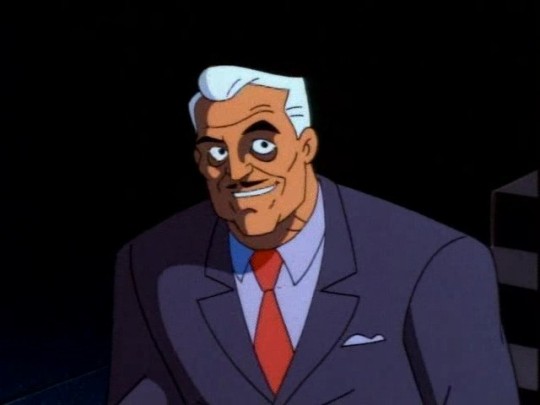
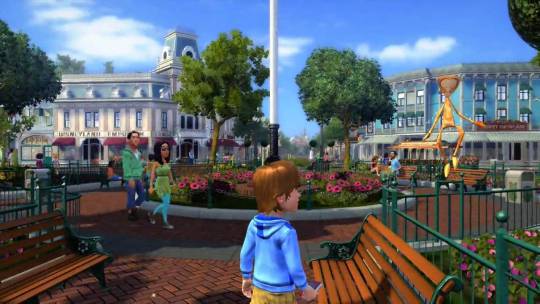
Since his old workplace fired him before Batman linked him with the missing persons and found him, and Arkham's vouching for him didn't get Tetch his job back (especially since they weren't too happy tetch had adapted their BCI for recreational use), Tetch was out of work. That was until Grant Walker reached out, wanting to adapt Tetch's Wonderland to create a virtual theme park and to improve the IRL parks' AR and immersive elements (think the Xbox connect Disneyland game, but actually functional). An opportunity Tetch couldn't pass up, given he'd been struggling to find work since leaving Arkham and was entering an increasingly precarious financial situation.
Since Tetch adapted Wayne Enterprise's BCI they'd help develop into the hardware running Wonder OS, there was some dispute about whether or not his project would be entirely his own IP or if the resources he technically stole to make it could get him in legal trouble. "Fortunately" Walker offered to protect Tetch from any such case, in exchange for Tetch granting Walker the right to use, market and profit from the virtual he'd created Wonderland - which he agreed to. As successful as Walker's ventures so often were, the opportunity to experiment with park ideas without the expense of land or labour seemed too tantilising to pass-up. Not to mention it could be another venue of advertising his existing IPs to people who otherwise couldn't afford to go to the parks themselves.
Initially, the public reception to announcing Wonderland's debut was... mixed. Reviews from playtesters were glowing, and Walker had his team refine the multiplayer headsets Tetch had prototyped into something that could be made and distributed much more cheaply. Still, trust in Tetch's handiwork was minimal at best after what he did, how could they trust he wouldn't just use it to trap more people again? A green tick of approval from an asylum wouldn't be enough to convince people Tetch was sane. Eventually though, a mix of relentless promotion and sanitisation of Tetch's past got Walker the results he wanted and a steady player base grew.
Honestly, Tetch had tried deliberately to avoid going back into Wonderland or doing any work on his old pet project while he was still getting back on his feet. Especially because until he had a reason to return to the real world, he probably never would have. Oh the temptation, especially early on, was gnawing at him as the dread and self-doubt lingered despite all the progress he'd made in therapy. Returning to it now seems... strange. Like staring at an old picture of himself, so detached from how he felt at the time he'd made it. But he needed the money, and was a different person now, right?
By his therapists' orders, Tetch limits his screen-time only to a few hours a day and goes on a walk / runs errands outside for at least an hour every day, to better facilitate chances of meeting new people and to prevent another spiral into self-isolation. The people he used to chat with online, his old "friends" of sorts, weren't exactly keen to keep talking to him anyway after nearly dying of dehydration in his digital cage, so he didn't have much reason to go back online anyway. That is except for one person, though Tetch hadn't realised it. Too busy making a new life out in the world, to notice the hundreds of messages spamming his inbox on every conceivable chatroom he used to frequent.

"Cat" / Caterina Bressi, one of the Bressi mob family that mostly deals in drugs and information, has helped with her family's dealings modernise by data farming and hacking into police devices and those of other mobsters either for blackmail or to sell to other people in Gotham's underworld who need the info for their own schemes. She is bed-bound due to a mix of chronic illnesses that leave her with little strength and energy to do anything, which is partly why she was on the same forums of Tetch and why they related to each other in their isolation. Cat's skills in coding are the only thing keeping her family from seeing her as anything but a liability and she resents being whittled down to her unappreciated usefulness - again, like Tetch was in the lab. She was one of the people who was sent a prototype headset and actually loved every minute in Wonderland and desperately wished to go back once she was "rescued" from it.
She eventually get's back in contact with Tetch and convinces him to restore the old version of Wonderland (not the polished, commercial form it now was under Walker). .Partly out of sympathy and partly due to some difficulties adjusting to his newly formed social life and existance out in public, Tetch is grateful to still have a friend he relates to in ways he can't with his new, more "well-adjusted" friends and ends up spending more and more time with Cat. .Overtime, their friendship morphs into an unhealthy dependancy (moreso Cat depending on Tetch than the other way around) as she begins to isolate him from his newer friend groups.
Eventually, to get away from her responsibilities to her family she insists Tetch use his lab experience with nerve-based prosthetics to help her move again. Both to get away from her family and so they do not narrow her self-worth down to how useful she is to them. Tetch insists she is fine as she is and he can help her without changing her in that way, but eventually caves and makes what would become the basis of this AU's version of the mind control device. Not actually mind-control, but instead stimulating controlled movement of the body similar to how some existing peripheral nerve interfaces work Although the main controls were designed so Cat / the person being moved is the one controlling the motion, it can in theory be connected to another person (have a remote control centre on someone else, as a backup of sorts).
Once completed, Cat begins to tag along with Tetch everywhere he went so she wouldn't be alone even for a minute. Which became an issue when he had to go to work, since Walker was worried about leaks of any new content his team might work on if someone like Cat tagged along with Tetch to work. When Tetch tries to enforce reasonable boundaries and see his newer friends more like before Cat came back into his life (offering to help her make more friends of her own / introduce him to his other friends) she refused and doubled down in her attempts to control his day to day activities.
Defying his therapist's orders, wanting to relive how their old friendship was, she encouraged him to work more on the old WonderOS and give her access to it so she could help him with it too and spend more time in Wonderland again.
Without Tetch's knowledge, Cat steals Tetch's old lab notes and changes the old WonderOS code to be compatible with her peripheral nerve interface's control centre - basically wanting to see if she can fully immerse herself like a ghost in the machine and fully escape her real life. Once Tetch finds out, right before she's about to upload herself, he tries to stop her - worried it might kill her or otherwise go wrong. In the scuffle, Cat falls and Tetch isn't sure if her plan worked or if he'd just accidentally killed her or failed to prevent her death (if her plan killed her). Not sure what to do with the body, he jerryrigs the control centre so he can use it and (once revival fails) ends up trying to evade suspicion (and preserve his sanity) by animating her like she was still alive, trying to rationalise it all.
Given his new friends haven't seen him in a while, a couple days into his descent into madness they visit him. If this was part of an animated series, I would show his descent into madness as an abreviated montage of him going through the motions of grief while mimicking his day-to-day routine with her reanimated corpse weekend at Bernie's style - probably to this song, ending with his friends' knock at the door:
Once he is eventually returned to Arkham (charged with Cat's manslaughter and found with the old headset back on but now "haunted" with Cat's ghost in the machine goding him to stay in Wonderland instead of dreary reality - especially with his return to Arkham once again isolating from his new friends, even as they do try and visit) the doctors think he is hallucinating, but he's not. He just keeps one foot in the escapist realm he created, both in an attempt to deal with his guilt towards what happened to Cat (even if she personally holds no hard feelings and considers what happened an improvement on her old life), and for comfort like he did back before his first admission to Arkham. I like to think of it like Pyro-Vision / an AR WonderOS ("Wonder-Vision") built into his hat that's genuinely painful and distressing to remove.
Tetch's access to his Wonder-Vision varies depending on the management at Arkham. Hugo Strange allows him to use it, but sometimes deliberately removes it - both of which serve to help Strange better understand Tetch (by his behaviour in both circumstances). Under Bolton's management, access to Tetch's Wonder-Vision is strictly prohibited (as with most posessions of the inmates). While still under Hugo's management, however, Cat tries everything in her power to expand her reach across other devices. Including Strange's work computer at Arkham, meddling with his work in her wake (if accidentally). It wasn't long before her seeming sentience was distinguishable from just an irritating computer virus. Strange couldn't help but seize the opportunity to study (and toy with) one of the rare instances of seemingly true artificial intelligence. He manages to trap her in his system through a mix of almost complete isolation from local networks and an aggressive firewall he had one of the security staff code.
Kept like a fairy in a jar, he studied her much like he did Tetch. Their co-dependent friendship based largely on their shared isolation. When one might prove uncooperative, the other might run their mouth in ways that implicated the other. Once studying them separately bore nothing more of note, Strange did exactly what Cat had hoped she'd forever escaped since becoming a ghost in the machine... He re-embodied her. Not with mortal flesh, fortunately, but with something just as infuriatingly restrictive - a pixel pet (robotic toy body with digital interface, like a cross between a tamagotchi / pixel chic and a furby) to keep Jervis company after losing his hat priviages.
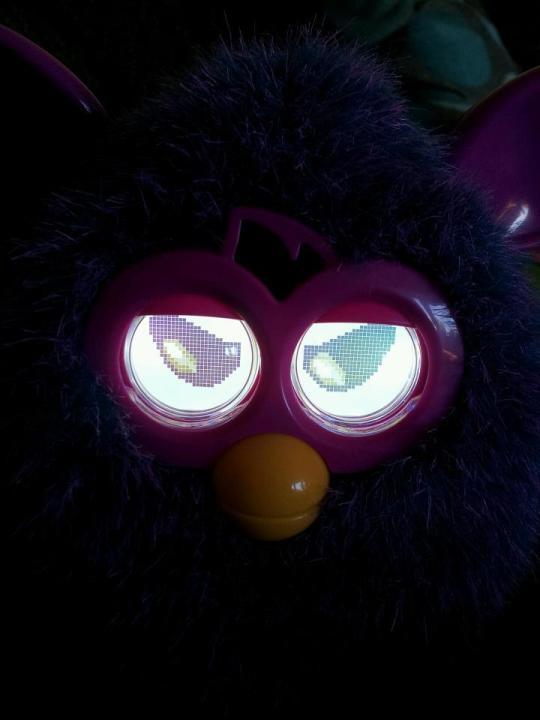
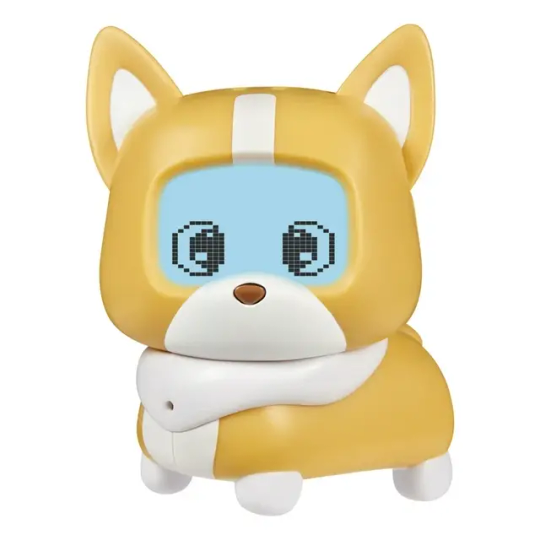
That is the gist of things so far! I will update as and when new plot beats and edits come to mind.
#This was only meant to be a quick summary!#Wtf#Hope you like it#Honestly just wanted to focus more on the drawbacks of relying on escapism as a crutch for coping with social isolation#Definitely can't relate!#Sarcasm#I prefer the idea that he's smarter than people appreciate#Hence why he's a lab assistant and not a fully qualified neuroscientist#Also kinda tired of the overused Alice pining so pulled an uno reverse of sorts#Jervis Tetch#batman au
14 notes
·
View notes
Text
screensavers are what your computer thinks of when it dreams. they take little naps when you go too long without using them, and it's up to you to varnish the landscapes of their REM cycles with more trinkets from coolscreensavers.com when they wake up. old school computers used to come with built-in screensavers because the software designers of the past wanted nothing more than for the technology of the future to have been nurtured by the endlessly unfurling beauty of bouncing geometry and 3d dolphins. but what does the technology of today envision? the darkness encased in my cracked samsung galaxy tells me not much. but i believe in the future. i believe that one day every computer will once more awaken from a refreshing dreamscape to the soft light of it's desktop's default photo landscape background, ready to consume more malware.
29 notes
·
View notes
Text
Oh boy, I haven't made silly clipshows in over a decade, but felt compelled to try again. And friendly souls helped me finding software simple enough for a tech idiot like me to use XD
Do be gentle, just my first practice piece to make a dumb joke that was stuck with me.
Tribute to @urbanqhoul and their "Whimsy's REM World" and characters, that I love very much. I hope you'll at least give a chuckle at this silly thing.
Art and characters absolutely belongs to @urbanqhoul. Except image and audio of Lunar from "The Lunar And Earth Show" on youtube, audio specifically cut from their Digital Circus episode 2 reaction video.
Capcut was used to put this thing together
Do enjoy!
#PuffBlog#UrbanQhoul#WRW#Whimsy's REM World#Silly#Video#Clipshow#LAES#Lunar And Earth Show#Whimsy#Angel#Lunar#Live Lunar Reaction#CapCut
9 notes
·
View notes
Text
The Definitive Guide to Best Real Estate CRM Software
Customer relationship management (CRM) software is a pivotal tool for modern businesses, designed to manage interactions with current and potential customers. At its core, the best real estate CRM software centralizes customer data, automates various tasks, and enhances communication, thereby enabling businesses to build stronger relationships and improve overall efficiency.
In the real estate industry, cloud-based real estate management software is particularly essential due to the complex and multifaceted nature of real estate transactions. By leveraging PMS software, real estate businesses can streamline their operations, enhance client interactions, and ultimately achieve better outcomes. In a highly competitive market, adopting the right CRM solution can be a game-changer, providing a significant edge over competitors.

Benefits of Using Real Estate CRM Software
Improved customer relationship management
Enhanced lead management and conversion rates
Streamlined workflow and task automation
Better data organization and accessibility
Increased sales and revenue
Key Features to Look for in the Top Real Estate CRM Software
Lead and contact management
Email and communication tracking
Task and calendar management
Marketing automation tools
Reporting and analytics
Mobile accessibility
Integration with other tools and platforms
How to Choose the Best CRM Software for Your Real Estate Business
Assessing your business needs and goals
Evaluating the scalability and flexibility of the software
Considering the ease of use and user interface
Checking for customer support and training resources
Reading user reviews and seeking recommendations
Taking advantage of free trials and demos
Importance of Choosing the Right CRM Software for Real Estate Businesses
Selecting the appropriate solution for real estate businesses is a critical decision that can significantly impact operational efficiency, client satisfaction, and overall business success. Here’s a recap of the key reasons why choosing the right software is so important for real estate professionals:
1. Enhanced Efficiency and Productivity
Automation of Routine Tasks: The right PMS software automates repetitive tasks such as scheduling, follow-ups, and data entry, freeing up valuable time for real estate professionals to focus on high-value activities like client interactions and closing deals.
Streamlined Workflow: Efficient real estate management software streamline workflows, ensuring that all processes from lead generation to closing are handled seamlessly and efficiently.
2. Improved Client Management and Relationships
Centralized Data: A good CRM system centralizes all client data, making it easily accessible and providing a comprehensive view of each client’s history and preferences. This allows for more personalized service and better client management.
Enhanced Communication: PMSs consolidate communication channels, ensuring that no client interaction is missed and all communications are recorded for future reference.
3. Effective Lead Management
Lead Tracking: Effective system tracks leads through every stage of the sales pipeline, ensuring that potential clients are nurtured and followed up with appropriately.
Improved Conversion Rates: By managing and analyzing leads efficiently, cloud-based software helps in improving conversion rates, and turning more prospects into clients.
4. Data-Driven Decision Making
Advanced Analytics and Reporting: The right system provides powerful analytics and reporting tools that help real estate professionals track performance metrics, identify trends, and make informed, data-driven decisions.
Performance Monitoring: Regular insights into key performance indicators (KPIs) allow businesses to monitor progress, identify bottlenecks, and adjust strategies as needed.
5. Increased Mobility and Accessibility
Mobile Access: The best CRM solutions offer mobile accessibility, enabling real estate professionals to manage their work on the go and stay connected with clients from anywhere.
Real-Time Updates: Mobile access ensures that all data is updated in real time, providing accurate and up-to-date information at all times.
6. Scalability and Flexibility
Adapting to Growth: The best CRM software can scale with your business, accommodating increased numbers of users and more complex processes as the business grows.
Customization: Flexible solutions can be customized to fit the specific needs and workflows of a real estate business, ensuring optimal performance.
7. Enhanced Security and Compliance
Data Protection: Quality CRM software provides robust security features to protect sensitive client information and ensure compliance with data protection regulations.
Regulatory Compliance: Automated compliance checks help businesses adhere to relevant laws and regulations, reducing the risk of legal issues.
Final Thought
Choosing the right solution is crucial for real estate businesses aiming to enhance efficiency, improve client relationships, and drive growth. By leveraging the right tools, real estate professionals can automate routine tasks, manage leads effectively, make data-driven decisions, and provide exceptional client service. In a competitive market, the CRM software is not just a tool, but a strategic asset that can propel a real estate business to new heights of success.
#best real estate crm software#rems software#real estate software vendor#pms software#crm software for property management#property management software
1 note
·
View note
Text
i am sitting down and pouring tea as if i do it every day, go through the motions like the hands upon a clock. though it feels right, a part of me knows that it's wrong, as if another's will have moved meee. it's like i am hitting all my marks, as if i am acting in a play. so out of character yet somehow not a shock. i'm like a software program caught in an endless loop: just bad code that keeps repeating. is this the way it ends now? how could i not see this coming? my camera's cloudy lens now takes much darker picture than before -
i know by now you understand you're but a pawn upon a board. i've won the game but never gave up half my years. life will continue just the way i've always planned - let the cold hard justice crash the system! I've always stayed a step ahead but you were with me the whole way. until i played upon a shinigami's fears: for misa's love, she wrote your name, then left upon a breeze into the sands of dust and darkness. this is the way it ends now! see it flicker, hear it humming - my power extends now. rem has written, you will write no MORE! i've seen you right from the start! i've simply let you play your part! you'll never ever get away! DON'T YOU SEE THAT YOU WILL DIE TODAY?
is this the way it ends now? how could i not see this coming? the message that it sends now sounds exactly like a closing door... this is the way it ends now! see it blazing, hear it drumming! like a closing door! feel how a minute spends now, when you wish you had a minute more - like a closing door - a minute more.
#🍂 arian's shit#death note musical#death note the musical#death note#something about death and a notebook. or whatever. she dies of diarrhea in three minutes.
3 notes
·
View notes
Text
Vernacular Word Clouds and Information Aesthetics
“The purpose of reduced language is not the reduction of language itself but the achievement of greater flexibility and freedom of communication (with its inherent need for rules and regulations). The resulting poems should be, if possible, as easily understood as signs in airports and traffic signs.” —Eugen Gomringer, “The Poem as Functional Object” (1960)
“The first thing that becomes clear to anyone who compares the dream-content with the dream-thoughts is that a work of condensation on a large scale has been carried out.” —Sigmund Freud, The Interpretation of Dreams (1899)
“What is happening?!” —User input prompt, Twitter (2023)
A juice bar has words expanding across its window. The words are: “Cheers to nature,” “positive,” “passion,” “good,” “wellness,” “cure,” “happiness,” “watermelonade,” freshness,” “serenity,” “kale delight,” “relaxation,” “peanut butter oatmeal,” “calm,” “lifestyle,” “wheatgrass,” “sharing,” “wellness,” “whole greens,” “joy,” energizer,” “positive,” “protein supreme,” “healthy,” “organic,” and “life.” The terms are arranged an in amorphous cluster, in a nondescript (vaguely Grotesk) typeface, in a range of sizes, either parallel or perpendicular to one another. Since it is vinyl on glass, the cluster of words floats in the air. The words face out towards the street, although they just as well might appear on an interior wall. They advertise the business to passerby, inventorying possible experiences that might take place. Unlike more conventional awning or window signage, which might linearly list the products and services offered, these words take up the aesthetics of a diffuse field, with blurry edges. And just as the field is relatively indifferent to the form of its support, the rectangular window, it is also relatively indifferent to the level of concreteness and specificity of each of the terms it contains. The term joy is a member of the same set as the term peanut butter oatmeal, and is represented at the same scale.
Word clouds are not an uncommon feature of the contemporary graphic environment. They are not exactly ubiquitous, but they appear throughout metropolitan landscapes as interstitial visual clutter, in contexts where we are rarely anything other than indifferent to their presence: grocery stores, apartment buildings, hotels, fast-food restaurants, shopping malls, airports, corporate offices. They are indigenous to what the architect Rem Koolhaas called “junkspace”: an uncoordinated proliferation of shapeless filler, with its “superstrings of graphics,” its “fabrication of non-existent plurals,” its “fuzzy empire of blur” (“flamboyant yet unmemorable, like a screensaver”). But these formless textual forms are even more particular in a historical sense. They are not reducible to postmodernism, although they inherit its flatness. And while they have no connections to any definite style in art or design today—although they may echo the avant-garde textual experiments of artistic movements like Symbolism, Constructivism, Dada, and concretism, for which the collision of linguistic signs in nonlinear space still represented a revolutionary moment—they are unmistakably very recent, and very medium-specific. They are the forms of a residual Web 2.0, ornaments of a computational culture in which the aesthetics of the historical avant-gardes were banalized in software. Today, the everyday word cloud is more recognizable as an architectural derivative of software, a derivative that has discarded its origins in statistical analysis and UX design, let alone any origins in concrete poetry. The movement of the word cloud is the movement of informatics and interfaces into decorative vernaculars, registering our diffuse, formless present.
What is a word cloud? It is a set of terms—words, phrases, and in rare cases complete sentences—arranged in a cluster or constellation. It is free-associative, impressionistic, asyntactic. It is atmospheric, a brainstorm. It is an accumulation of themes. It is probably set in an inelegant or kitschy typeface. It is an array of opaque and possibly hallucinated correlations. Its terms do not create meaningful sequences, but are simply adjacent or orthogonal to one another. If they create anything, it is a mood or a vibe, a loose bundle of co-occurrences that may be felt. A word cloud is scanned, not read. To use Robert Smithson’s phrase, a word cloud is “language to be looked at.”
What is immediately recognizable in the decorative word cloud, the architectural word cloud, is a specific relationship between possible experiences and their description. As wallpaper, word clouds fulfill the need to put something on the wall, to fill space, and at the same time they communicate something about a place and about experiences associated with that place. The wall of an Arby’s fills up with terms like “signature,” “oven roasted,” “market fresh ingredients,” “hand crafted sandwiches,” and “Arby’s roast beef sandwich is delicious.” The wall of a Bushwick apartment building fills up with terms like “new,” “housing,” “social,” “avenue,” “street,” “future,” and “old city.” This communication is both too little and too much. It accomplishes the minimal task of naming some of the things that might go on here, some of the things (feelings, products, values, referents, connotations) on offer, but in a way that has the appearance of overactivity, busy-ness. It has parsed, labeled, and filtered the data of the experience we (as prospective consumers) are potentially having, but clarifies nothing. It leaves behind a mess; it is the entropic residue of taxonomy. Like almost everything in a designed environment, it has attempted to calibrate and nudge our attention without making overbearing demands upon it. Yet the coarseness and triviality of its matter—language in an ugly font—seems to fail in this regard. If we find word clouds unpleasant, it is because they are clumsily explicit, neither ignorable nor interesting. They name the obvious. They stupidly say words without composing them. They appear to preempt our own powers of description and association, describing and associating for us, but they are also completely unconvincing. It is as though the very first stage of a marketing project, the brainstorming or moodboarding stage, in which the product or brand is “ideated” upon, sufficed for a final design. There is no development beyond the whiteboard.
The word cloud, as a mode of textuality, cannot be conceived outside of computational culture. This is not only because it is produced using digital tools, or because it coincides with certain algorithmic operations (of theme detection, for instance, or the computing of taste), but because it has developed directly from data visualization techniques. In data visualization, a word cloud (or term cloud or tag cloud) is a technical image-text that synthesizes the contents of a set of data by arranging and scaling its terms according to a logic of measurement. What is most straightforwardly measured in this kind of word cloud is frequency. The more times a datum appears in the set, the larger its text may appear. This relation can then be adjusted using other statistical parameters, such as deviation from some other distribution. Sometimes the words are also plotted in space, in which case positionality becomes meaningful (although this would probably be called a scatter plot rather than a word cloud). In any case, the aim is to summarize data, to give humans a more or less immediate impression of can be found in the data.
UX design researchers have located the earliest word cloud (at least in its data-visualization capacity) in a 1976 paper by psychologist Stanley Milgram, who surveyed residents of Paris and mapped the terms they used. A word cloud also appears prominently on the cover of the first German-language edition of Gilles Deleuze and Felix Guattari’s A Thousand Plateaus (1991), “rhizomatically” showcasing the text’s most idiosyncratic concepts. Douglas Coupland, in his third novel, Microserfs (1995), uses word clouds to model the keywords in “subconscious files,” the imaginary dream-work of a Microsoft employee’s personal computer. Following these precedents, the tag cloud became a trope of early Web 2.0 design, most notably on the social photo site Flickr (2004–) and the social bookmarking site del.icio.us (2003–2017). Here, the words in the cloud were pieces of ad-hoc, user-generated metadata, or “folksonomy,” terms constantly and conjunctively attached by users to content (which may or may not have actually included these terms). And much like Milgram’s survey of Parisians, the social media tag cloud provides a sense of what people are talking (posting) about. The cloud becomes an interface, a clickable map of labels through which one can navigate a database.
So perhaps we see in the latter-day word cloud—the one on the wall of the juice bar—not only the condensation of the taxonomic or statistical, but also the condensation of the social. Perhaps in the nimbus of terms on the fast-casual restaurant wallpaper we are supposed to be hearing the polyphony of the multitude, a “network power,” a “living alternative.” It may be that we are meant to believe that these are not just the statements of a brand but the voices of “community stakeholders” (and satisfied customers). Meanwhile, new algorithms have automated or augmented social tagging practices. New interfaces, too, have reduced the presence of tag clouds online, opting for single-stream content flows or “feeds” (Instagram, TikTok, Spotify) in which linguistic description does not have a prominent mapping or labeling function for the (sighted) end user. The original function of the tag cloud—summarizing a whole—no longer seems important once content delivery, with the help of machine learning, becomes hyper-individualized, and much more passive for the end user (who can only nudge the algorithm). There is no question of a single database of which to have an impression. The clouds appeared to have receded.
The German philosopher and founder of “information aesthetics” Max Bense argued that works of literary art were not so different from any other source of information. “Aesthetic realizations,” he argued in 1960, can be “described through statistical quantities of conditions instead of irrational motives of values.” He described text in atmospheric terms; for Bense, there was no text that was not a cloud. Texts are like “gaseous spaces,” as Claude Shannon’s information theory already recognized when it sought to translate thermodynamic particles as linguistic particles. Information theory has not changed much; today’s “deep dreaming” algorithms, such as AI diffusion models, work by introducing gaseous noise into training data that they then filter out in order to generate new outputs. The clouds are condensed and displaced, a dream-work written not only by psyches but also by machines. The word cloud may be a degraded form, but clouds of words remain.
8 notes
·
View notes
Text
The Way It Ends - Varian and Hugo
[Hugo]
I'm sitting down and pouring tea
As if I do it every day
Go through the motions
Like the hands upon a clock
Though it feels right, a part of me
Knows that it's wrong
As if another's will had moved me
It's like I'm hitting all my marks
As if I'm acting in a play
So out of character, yet somehow not a shock
I'm like a software program
Caught inside an endless loop
Just bad code that keeps repeating
Is this the way it ends now?
How could I not see this coming?
My camera's cloudy lens now
Takes much darker pictures than before
[Varian]
I know by now you understand
You're but a pawn upon a board
I've won the game, but never
Gave up half my years
Life will continue just the way
I've always planned
Let the cold, hard justice crash the system
I've always stayed a step ahead
But you were with me all the way
Until I played upon a Shinigami's fears
For Misa's love, she wrote your name
Then left upon a breeze
Into the sands of dust and darkness
This is the way it ends now
See it flicker, hear it humming
My power just extends now
Rem has written, you will write no more
[Hugo]
I've seen through you right from the start
[Varian]
I've simply let you play your part
[Hugo]
You'll never, ever get away
[Varian]
Don't you see that you will die today?
[Hugo]
Is this the way it ends now?
How could I not see this coming?
The message that it sends now
Sounds exactly like a closing door
[Varian]
This is the way it ends now
See it blazing, hear it drumming
[Hugo]
Like a closing door
[Varian]
Feel how a minute spends now
When you wish you had a minute more
[Hugo]
Like a closing door
[Varian]
A minute more
#tts#rta#tangled the series#tangled#rapunzel's tangled adventure#varian#tts varian#rta varian#varian the alchemist#varian and the seven kingdoms#varian and the 7 kingdoms#varian vat7k#vat7k varian#vat7k hugo#hugo vat7k#hugo varian and the seven kingdoms#hugo rottewange#death note#l lawliet#light yagami#death note l#l death note#light death note#death note light#death note the musical#the way it ends
5 notes
·
View notes
Text
Comprehending Hearing Aid Fitting in Melbourne: Why Is Hearing Health Important?
A hearing aid fitting in Melbourne and a properly fitted hearing aid are frequently the first steps on the road to better sound for Melbourne residents who have hearing problems. It might be easier and more comforting to travel through this process if you understand it and know what to anticipate at every turn. Despite being a frequently disregarded component of general health, hearing health is vital to our interactions with the outside world.

Selecting the Appropriate Hearing Aid
Selecting a hearing test in Melbourne is the next step once a hearing loss diagnosis has been made. Many of the hearing aid companies in Melbourne carry products from international producers such as Phonak, Oticon, Widex, and Starkey. The degree of hearing loss, lifestyle, financial constraints, and aesthetic preferences are some of the variables that influence the decision.
Throughout the decision process, your audiologist will walk you through the advantages and disadvantages of each model and suggest solutions depending on your daily needs and audiogram. Before committing, you may try a gadget in your typical setting at one of Melbourne's many clinics, which also offer trial periods.
Personalised Programming and Fitting
The fitting, when the selected hearing aid is customised to meet your unique hearing profile, is the most important step in the procedure. This is the intersection between personalisation and technology. Your audiologist will enter your audiogram data into the device and adjust the settings for best results using computer software.
Real Ear Measurement (REM) technology is frequently used in Melbourne clinics for fittings. In order to assess the hearing aid's performance in real time, a tiny microphone is inserted into your ear canal. It guarantees that the gadget is precisely transmitting sound according to the geometry of your ear canal and your hearing loss. Better speech comprehension and general comfort are the results of this degree of accuracy.
Source: https://ivoryhearing.blogspot.com/2025/06/comprehending-hearing-aid-fitting-in.html
0 notes
Text

Game Balap Realistis: Mendekati Dunia Nyata Lewat Lintasan Virtual
Dalam dunia game, tidak semua balapan diciptakan sama. Sebagian menawarkan aksi cepat dan penuh warna, sementara yang lain memilih jalan yang lebih serius dan menuntut: realisme. Game balap realistis bukan sekadar hiburan, tapi sebuah simulasi yang berusaha meniru pengalaman berkendara di dunia nyata—dengan akurasi tinggi dan perhatian terhadap detail.
Lebih dari Sekadar Balapan
Game balap realistis tidak hanya menuntut kecepatan. Ia menuntut presisi, kesabaran, dan pemahaman teknis. Pemain harus memperhatikan suhu ban, pengaturan suspensi, distribusi bobot, hingga efek cuaca terhadap daya cengkeram aspal. Setiap keputusan kecil bisa berdampak besar terhadap performa di lintasan.
Simulasi Fisika yang Mendalam
Salah satu ciri utama game balap realistis adalah sistem fisikanya yang kompleks. Tidak ada manuver ekstrem yang mustahil secara ilmiah. Setiap tikungan, rem, atau akselerasi dihitung berdasarkan data nyata. Ini membuat permainan terasa menantang namun memuaskan—karena keberhasilan datang dari keterampilan, bukan dari kebetulan.
Kabin Mobil yang Detail dan Fungsional
Pemain bukan hanya melihat mobil dari luar, tetapi juga merasakan sensasi duduk di balik kemudi. Kabin mobil dibuat menyerupai versi aslinya, lengkap dengan panel kontrol, spidometer, dan suara mesin yang disesuaikan dengan tipe kendaraan. Bahkan, beberapa game memungkinkan interaksi manual seperti mengganti gigi secara realistis menggunakan kontrol khusus.
Lintasan Dunia Nyata yang Dihidupkan Kembali
Game balap realistis sering menampilkan sirkuit legendaris dari dunia nyata—dari Nürburgring di Jerman hingga Suzuka di Jepang. Semua lintasan direproduksi menggunakan pemindaian laser agar bentuk, tekstur, dan elevasi sesuai dengan versi aslinya. Ini memberikan pengalaman autentik yang membuat pemain merasa seperti benar-benar berada di trek balap profesional.
Peralatan dan Setup yang Mendukung Realisme
Bagi penggemar sejati, pengalaman ini ditingkatkan dengan perangkat tambahan seperti steering wheel, pedal, dan kursi simulator. Kombinasi antara perangkat keras dan software canggih menciptakan sensasi berkendara yang nyaris tidak bisa dibedakan dari aslinya. Bahkan, banyak pembalap profesional menggunakan game semacam ini untuk latihan.
Komunitas dan Dunia Kompetitif
Game balap realistis juga punya komunitas yang solid. Turnamen online dan liga balap virtual diadakan secara rutin, dengan aturan ketat dan sistem penalti yang menyerupai regulasi FIA. Dunia e-sports pun telah mengakui game balap simulasi sebagai cabang kompetitif yang serius, bahkan melahirkan talenta yang berkompetisi di lintasan nyata.
Penutup: Ketika Realisme Menjadi Pengalaman Bermain
Game balap realistis bukanlah untuk semua orang. Ia menuntut waktu, latihan, dan pemahaman mendalam tentang dunia otomotif. Tapi bagi mereka yang mencintai sensasi asli berkendara, tidak ada yang bisa menggantikan ketegangan saat menikung tajam dengan kecepatan tinggi, atau kepuasan saat berhasil menaklukkan lintasan teknis tanpa kesalahan sedikit pun.
Lewat game ini, dunia balap tidak lagi terbatas pada mereka yang punya akses ke sirkuit—melainkan terbuka untuk siapa saja yang berani menguasai kecepatan dengan kedisiplinan dan teknik tinggi.
1 note
·
View note